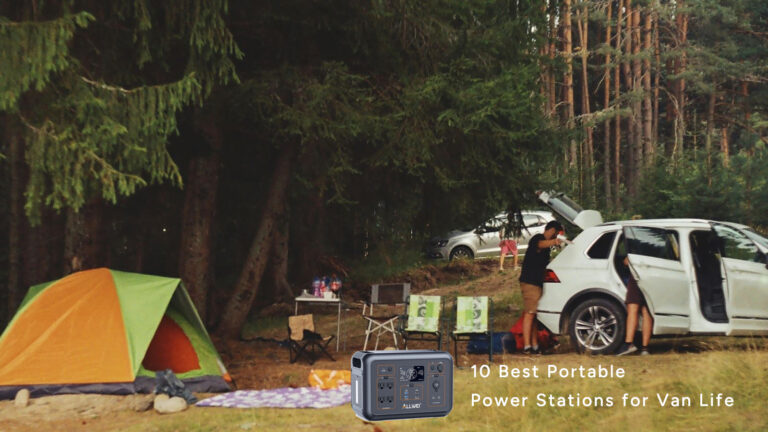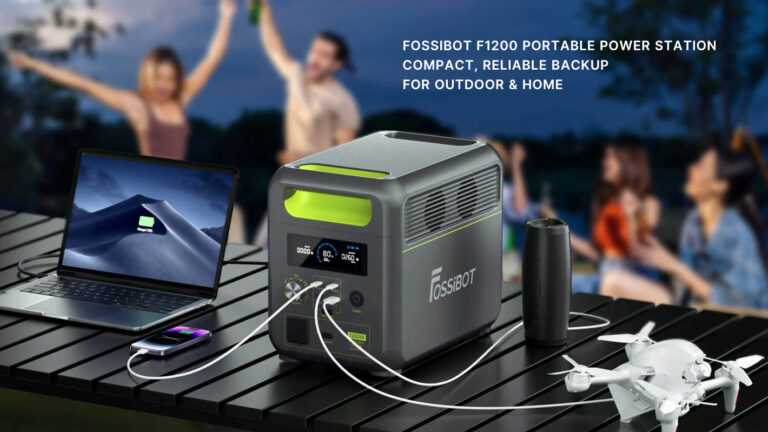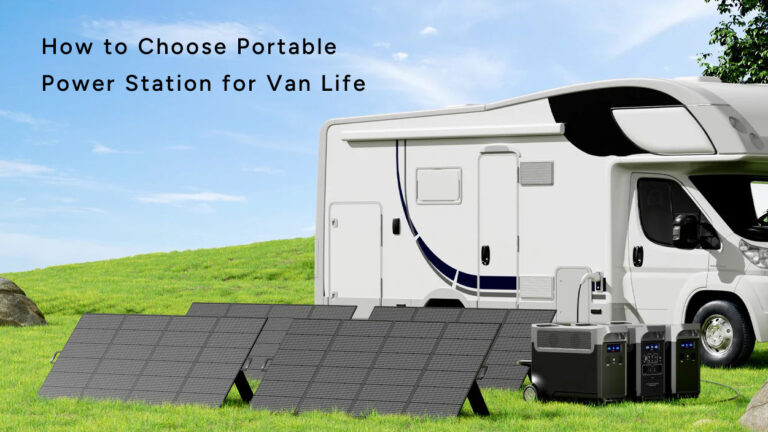What is Portable Power Station? and How it Works
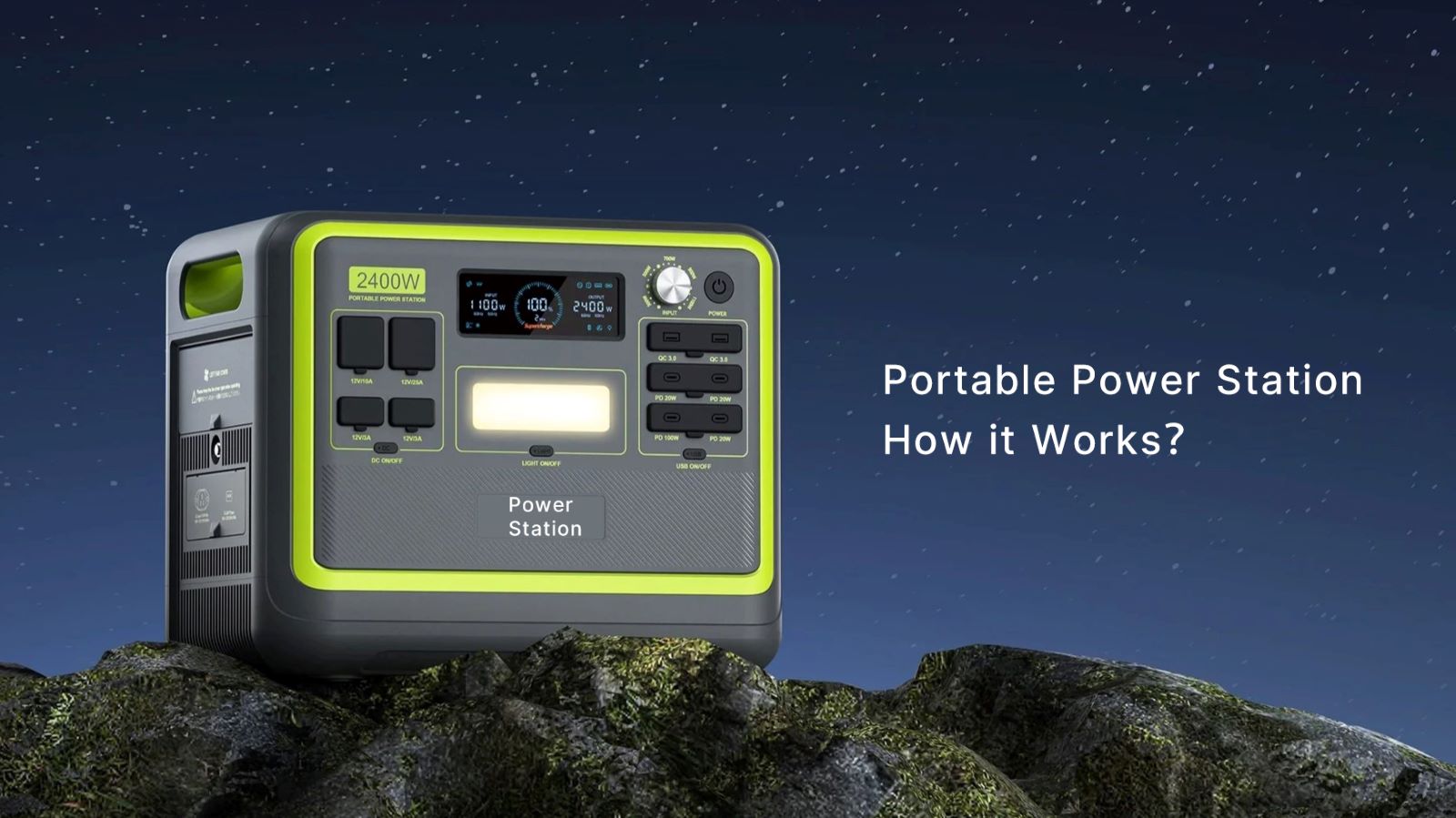
Have you ever seen a device that looks like a giant power bank, capable of charging not just your phone, but also your laptop, mini fridge, or even a rice cooker? That’s a portable power station — a versatile and increasingly popular solution for anyone who needs reliable electricity when outlets aren’t available.
Whether you’re camping in the mountains, working remotely from your van, or dealing with a power outage at home, a portable power station can be a game-changer. Let’s explore more details about the portable power staion, how it works, and what to look for when choosing one.
✻ This page may contain affiliate links. If you purchase through these links, we may earn a commission at no extra cost to you. As an Amazon Associate, we earn from qualifying purchases. We only recommend products we believe will add value to our readers.
What Is a Portable Power Station?
A portable power station is a compact, battery-powered device that stores electrical energy and delivers it through various output ports. Think of it as a smart, high-capacity power hub. In essence, it’s like an oversized power bank — but with 10 to 100 times the capacity. For example, a 500Wh model can charge your phone about 30 times or run a mini fridge for 5 hours. What really sets it apart is the inclusion of AC wall-style outlets (like 110V or 220V), which means you can directly power small appliances like a rice cooker, electric fan, or even a CPAP machine without needing any adapter.
Unlike traditional power banks, which are mainly for phones and tablets, portable power stations are designed to handle much larger loads and a wider range of devices.
Product Picks
- 👉 FOSSiBOT F2400 Portable Power Station – 2400W 2048Wh 🇺🇸 🇪🇺 (click on the flag to choose location)
- 👉 ECOFLOW DELTA 3 Plus Portable Power Station – 1800W, 1024Wh
- 👉 Jackery Explorer 500 Portable Power Station – 500W, 518Wh (Compared to the two models above, this one is a smaller portable power source. If you’re a light user, it’s the best choice — more durable than regular power banks, but not as big and heavy as the others.)
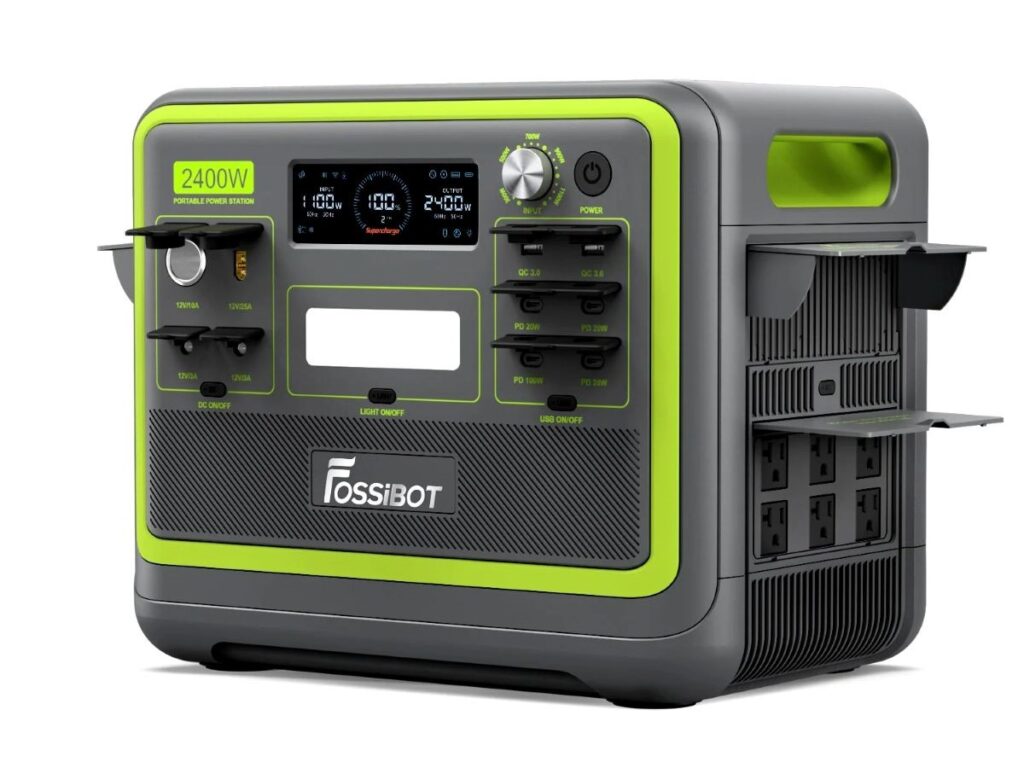
What’s Inside a Portable Power Station?
At first glance, it might look like a simple battery box, but there’s actually a smart system working behind the scenes.
1. The Battery
At the heart of every power station is its battery. Most models use either:
- Lithium-ion (Li-ion): High energy density and lighter weight. Good for casual or moderate users. For example, Jackery Explorer 500
- Lithium iron phosphate (LiFePO4): Longer lifespan (up to 3000+ cycles) and better safety, though usually heavier and bulkier. Like FOSSiBOT F2400 and Jackery Explorer 500
The battery stores energy in chemical form and delivers it as electricity when needed.
2. The Inverter
To run household devices, you need AC power — the kind you get from wall outlets. But batteries output DC power. That’s where the inverter comes in: it converts DC into AC, often delivering clean “pure sine wave” current that mimics grid electricity. Some cheaper units use modified sine wave inverters, but these may damage sensitive electronics.
3. Power Management System (BMS)
A Battery Management System keeps everything running safely. It:
- Monitors temperature, voltage, and current
- Prevents overcharging or deep discharging
- Protects against short circuits and overheating
- Helps balance battery cells to extend their lifespan
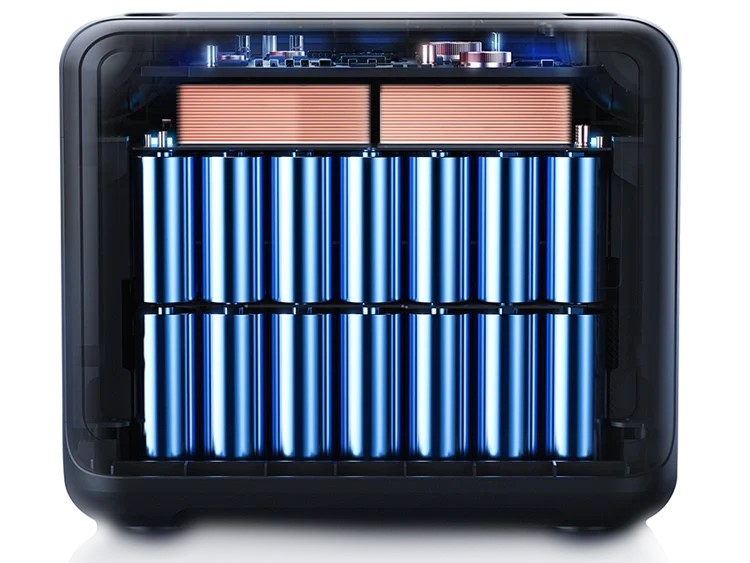
4. Charging & Output Controls
Portable power stations usually support several input methods:
- Wall charging: Fastest option (500W–1500W)
- Solar charging: Eco-friendly but slower; needs compatible panels and MPPT for efficiency
- Car charging: Useful on the road, but lower wattage (typically 100W–200W)
For outputs, they offer USB (including fast charging), Type-C PD for laptops, 12V car ports, and AC outlets — often with smart load detection and surge protection.
5. Cooling System
Depending on size and capacity, the unit may use:
- Passive cooling: For smaller models — metal casings and air vents
- Active cooling: For larger units — built-in fans with thermal sensors
How It All Works – From Charging to Powering Devices
- Charging the battery: Energy comes in from a wall outlet, solar panel, or car charger.
- Storing the energy: The battery holds the charge under careful supervision from the BMS.
- Powering your devices: When needed, the inverter kicks in (for AC), or devices draw DC directly through USB or 12V ports. Everything is managed to avoid overloading or overheating.
Real-Life Applications
Portable power stations are no longer just for tech geeks or survivalists. They’re becoming essential tools in everyday life:
- Camping and outdoor activities: Power your LED lights, coffee maker, camera, or drone in the wilderness.
- Home backup during outages: Keep your fridge, Wi-Fi router, or medical devices running during blackouts.
- Remote work and vanlife: Use your laptop, monitor, or printer while living or working off the grid.
- Events and pop-up shops: Set up speakers, lighting, or even small cooking appliances without needing a generator.
- Emergency rescue or field operations: Provide power for communication tools and basic equipment in disaster zones or remote locations.
Wherever mobility meets the need for electricity, a portable power station fits right in.

How to Choose the Right One
Choosing the right portable power station depends on your needs, but there are a few factors worth paying close attention to.
- Battery capacity, measured in watt-hours (Wh), tells you how much power the station can store. A 500Wh model can charge a phone about 30 times or run a 100W projector for 5 hours. A 1000Wh model can run a small fridge for about 1.5 hours.
- Power output determines what devices you can run. Be sure the continuous and peak output ratings exceed the startup wattage of your equipment.
- Charging methods and speeds matter too. If you plan to go off-grid often, look for a model that supports both fast AC and solar charging.
- Port selection is key. At a minimum, you’ll want two AC outlets and several USB ports. Some advanced models also support Anderson ports or RV connectors.
- Battery lifespan differs depending on the type. Lithium-ion typically offers around 500 full charge cycles, while LiFePO4 batteries can go up to 3000 cycles or more.
- Portability is another important factor. A 500Wh station might weigh around 5–7kg, while larger ones can exceed 15kg. Consider what you’re comfortable carrying or transporting.
And finally, extra features like wireless charging, built-in lights, app control, and emergency car starter functionality can add real value, depending on how and where you plan to use it.
Looking Ahead: The Future of Portable Power
Portable power stations are evolving fast. Solid-state batteries are on the horizon, promising even greater capacity in smaller sizes. Some brands are experimenting with hybrid storage, combining lithium batteries with supercapacitors to handle high-surge loads more efficiently. Others are integrating these stations into home microgrids, allowing them to serve as backup systems in smart homes.
There’s also a growing trend toward using eco-friendly materials and recyclable battery components, making these devices more sustainable and less harmful to the environment.
Final Thoughts
Portable power stations are changing how we think about electricity. No longer tied to walls and wires, we can now enjoy power in the middle of a forest, during a blackout, or at a roadside café — all from a compact, rechargeable box. With smart design and clean energy at their core, these devices offer both freedom and peace of mind. As with any tech product, choose based on your real needs — balance capacity, portability, and compatibility — and you’ll get the most from your investment.
